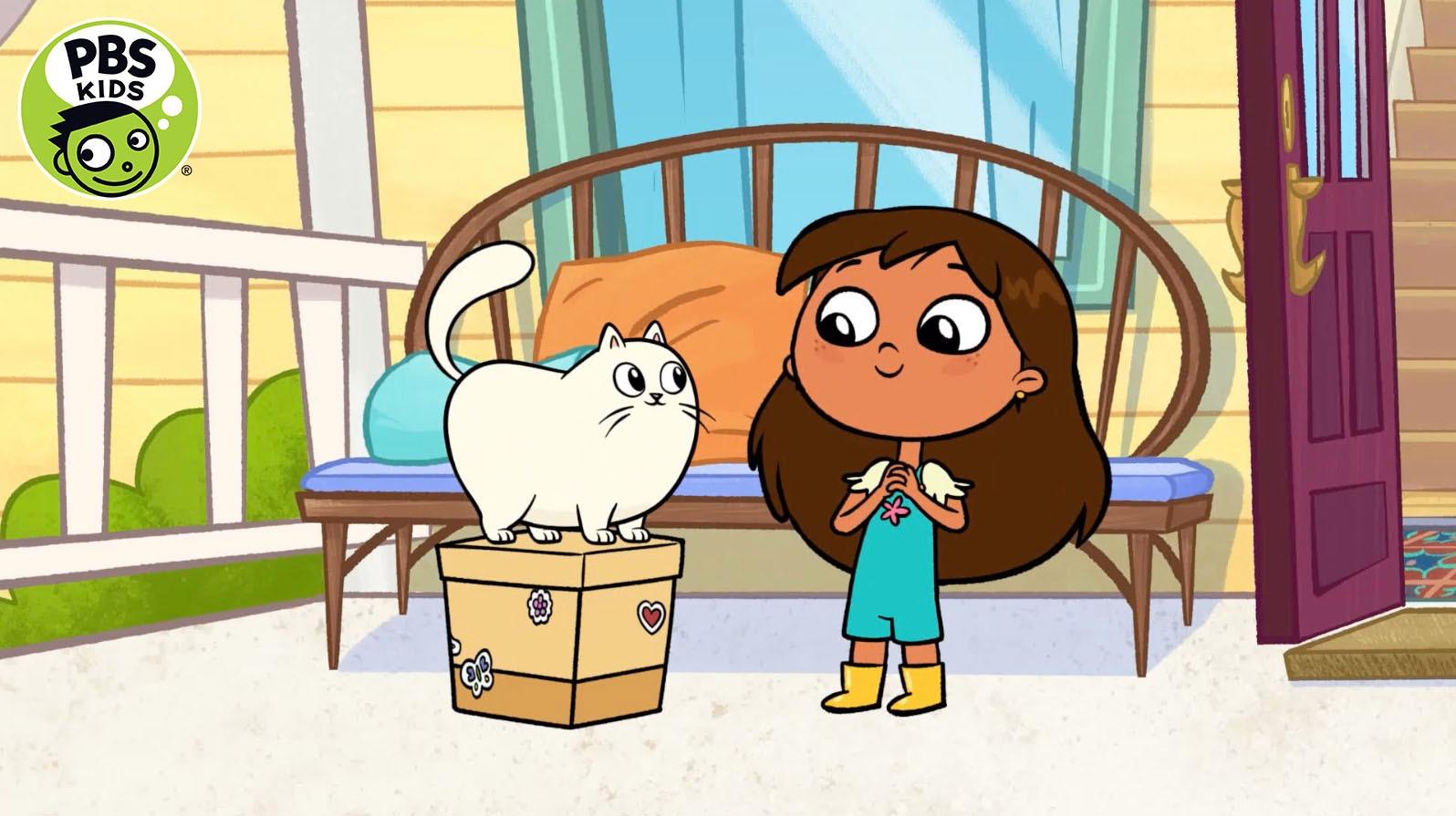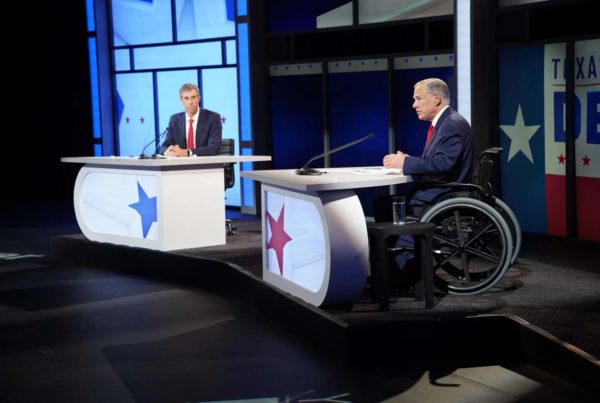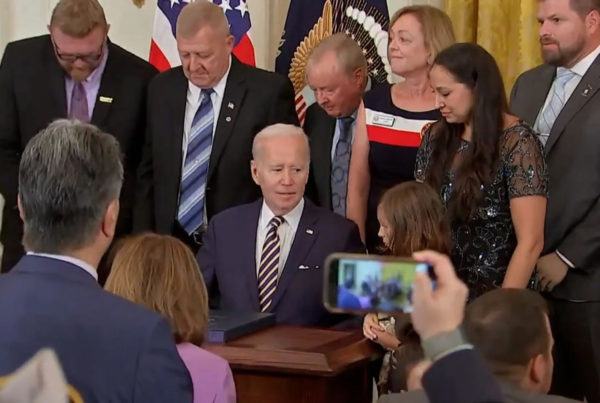Daniel Tiger, Dora the Explorer and Doc McStuffins are household names for many. Now, add Rosie to that list.
Rosie Fuentes is the star of the brand-new PBS Kids program “Rosie’s Rules.” And she’s also a Texan – from San Antonio, to be exact.
Jennifer Hamburg and Mariana Díaz-Wionczek, the show’s executive producers, talked with Texas Standard about the character, the setting, and the use of Spanish embedded with English in the program. Listen to the interview above or read the transcript below.
This transcript has been edited lightly for clarity.
Texas Standard: What are you are considering when you are shaping a new character like you were with Rosie?
Jennifer Hamburg: Well, I think that the key is how you asked the question about character. We always sort of like to start with the character. Because if kids can connect with the character or many characters on the show, then they’ll be engaged in what they’re watching. And then, if there is content to learn, they’ll be ready to learn.
Why was San Antonio the right place to set Rosie’s family?
Hamburg: I grew up here in Houston. I did live in Austin for a while. I haven’t lived in San Antonio, but I know it pretty well. And as we fleshed out the characters in the family, other than just my being here, there also was a sense that we wanted Rosie and her family to be representative of a lot of the PBS audience, which was diverse and from all over. And so San Antonio, specifically within Texas, just felt like sort of a representative city that had the urban and suburban and diversity and all of the things that we could kind of lean into to bring her world to life.
There’s a lot of Spanish mixed in with English on this program, and the Spanish is not explicitly translated. Can you talk about that approach of using what a lot of folks refer to as “Spanglish?”
Mariana Díaz-Wionczek: Yes. I love talking about this. It’s an approach that really reflects the way that many bilingual Latino families speak in the U.S., including my own. We bilingual families transition very swiftly and smoothly from one language to the other. It’s like one language system, one communication system that has two languages and they’re embedded with each other. So in the show we try to mirror that. So we have characters of different abilities of Spanish, so most of them are bilingual. But even mom, who is a monolingual English speaker, and Crystal, one of the siblings, they also speak sometimes a few words of Spanish proudly. Just because they’re part of this bilingual, bicultural family.
So one thing that we did that was very intentional was to create these catchphrases in both English and Spanish that we repeat throughout many episodes. And the catchphrases are part of a specific situation that we see between the characters. So we hope that these catchphrases will resonate with the viewers and they will get to learn them and enjoy them and hopefully repeat them.
Could you share a couple of those catchphrases?
Díaz-Wionczek: Sure. The one that comes to mind is when Papa, Rosie’s dad, enters and sees her. He says, “¿Qué pasa calabaza?” And she responds, “¡Nada, empanada!” Which is like, you know, “What’s going on?” And she’s like, “Not much.” But in Spanish. And it’s a great phrase that you hear frequently in Mexico. So the dad is from Mexico City. And he brings his phrases with him. So he’s teaching those phrases to his daughter from his own lived experience.
So she switches from English to Spanish when she’s talking to her little cousin who is her age. They’re both 6 years old. So they have a little dance that they do together. They say, “Elbow bump, silly jump, muévete!” So there’s a lot of them!
Tell us a little about Rosie’s sidekick.
Hamburg: Gatita is an instant hit, it seems. The way I like to describe Gatita is she is just happy to be there and she is just ready for whatever Rosie – you know, she likes to nap, but then when it’s time to jump into action, which, usually she’s startled into action by Rosie’s excitement, she’s just right there with her.
You know, she’s very expressive. She almost has human reactions as a cat. And are they real or does Rosie imagine this, you know, very intensive communication system they have? Who knows? You know, but we like to sort of give her a lot to do. And keep her expressiveness going because she’s just part of every adventure.
And let’s say something about Rose’s own personality. She has a lot of questions. Sometimes she doesn’t ask all of them before she acts. But that’s part of the charm.
Hamburg: Absolutely. She sings a song at the beginning of every episode, or near the beginning, and it’s called the “Gotta Know” song. And it’s sort of her assumptions about how something works or might work. For example, the mail. And she sings all about a wizard, does a wizard make it happen? You know, it’s just sort of based on a lot of ideas when we ask kids in research, “How do you think the mail works?” Or, “How do you think you get money from the bank?” Their answers were very instructive, and a lot of times they’re full of endearing misconceptions. And we wanted to really lean into that and celebrate that because even though there is, of course, a right way for the mail to work and it is not by wizard, it shows her imagination a little bit at that part. And then after that, she goes back into her story and her problem and solves it and ends up learning how things work.
What considerations did you take into account when creating Rosie’s family? The family is mixed. Mom has time to play with Rosie but also sometimes has to stop to take an important phone call.
Díaz-Wionczek: That’s right. We were very, very thoughtful and intentional in how we developed a family that felt realistic and layered and elaborate and sophisticated like real families are. So we created a family that was bicultural, as you mentioned; that was important to us so that kids can see that component on the screen. And so we decided to do the American mom from rural Wisconsin and the Mexican dad who comes from Mexico City. And then they also have Abuela, the grandma, who lives in Mexico City.
And then there’s a community that goes beyond that family. And we also were very intentional in how we designed that family. So the particular example that you mentioned, yeah, mom is mom. She’s loving. She’s absolutely very engaged and so is dad. And she’s still, you know, she has other things to do and she gets important phone calls. She has a book store. So she sometimes she has to tend to a customer that walks in, and the kids, you know, they do their thing as in real life.
So hopefully with these depictions of characters that seem realistic, kids are seeing themselves there and they relate to the character, which goes back to the beginning of what Jen was saying by relating to the characters and seeing these characters that are like them, then they’re open to more. They’re open to the comedy, they’re open to learning. We’re celebrating both the asking questions and being curious and being creative and not always getting it right. But the fact that little kids are coming up with these explanations is phenomenal. Their minds are really incredible. And we see that in a very humorous way in the show. So kids will see themselves and they will have a laugh while at it, because many of the theories that Rosie comes up with about the way that the world works comes from, as Jen said, from the children that we’re talking to and from our own children. And then there’s the window and the whole door to learn the real way that the mail works or the food comes to the grocery store. And so it just rounds up really, really nicely in the show.













